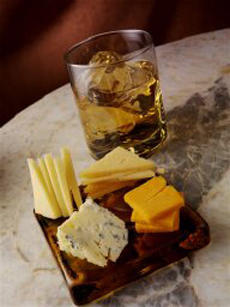FATHER’S DAY: Pairing Food With Single Malt Scotch
|
Ready for an evening of fine food and Scotch? On Thursday, May 29, Empire Steak House in New York City will show why single-malt Scotch pairs well with every course. A five-course classic steakhouse menu will be paired with leading single-malt Scotches, in a tasting led by Master of Whisky* Spike McClure; $150 includes five courses, five single malt scotches and a hand-rolled cigar.
You may not be able to attend the event, but you can create something similar at home. How about for Father’s Day? Empire Steak has shared their menu and Scotch pairings with us. We’ve included pairing notes notes from Spike McClure, plus tasting notes on the single malts courtesy of Master Of Malt.com. Each region of Scotland produces different flavors, and each distillery within a reason likewise. As with any wine varietal, different bottlings have flavors that pair better with particular foods. McClure’s top five favorite pairings for steakhouse cuisine and single malts: |

From the first course to the last, the right single malt replaces wine at dinner Photo courtesy Liquor.com. |
|
|
*Master of Whisky is not an official industry certification, but a term given to global brand ambassadors by Diageo, the world’s largest producer of spirits. More information. THE MENU Course 1: Raw Seafood Bar Course 2: Fish & Seafood |
||
